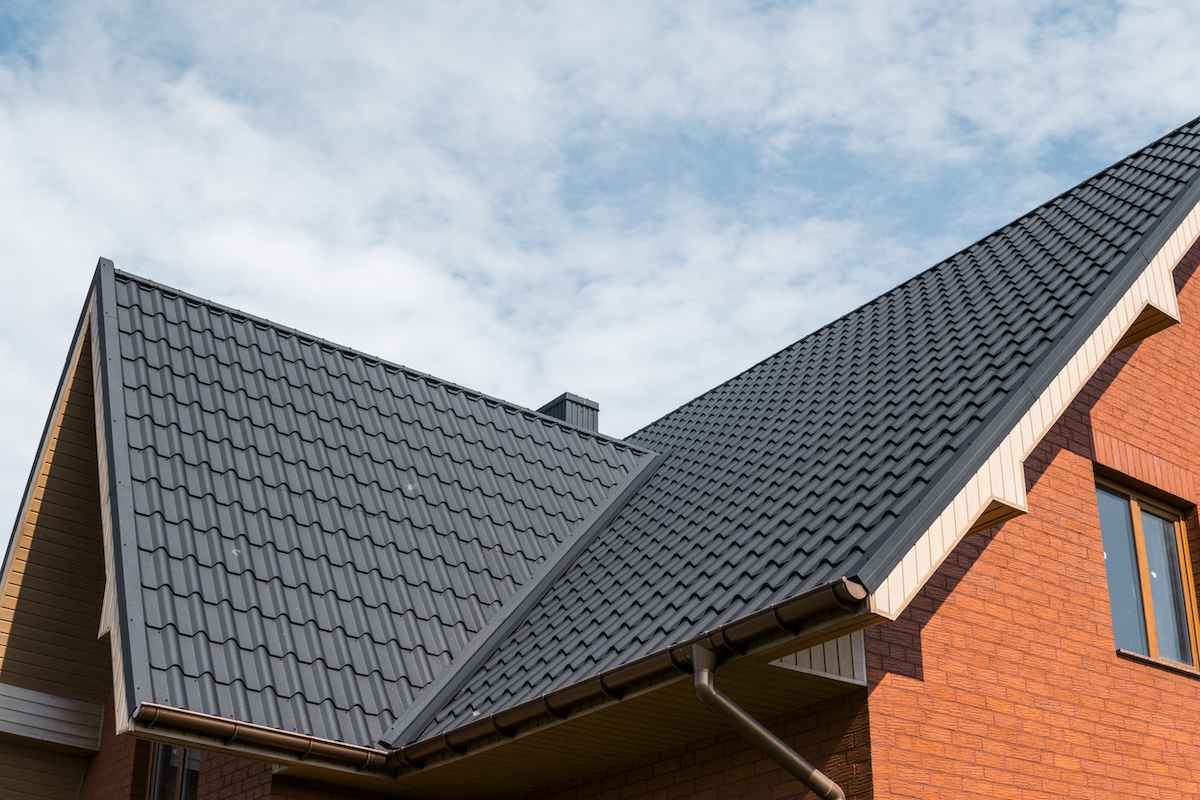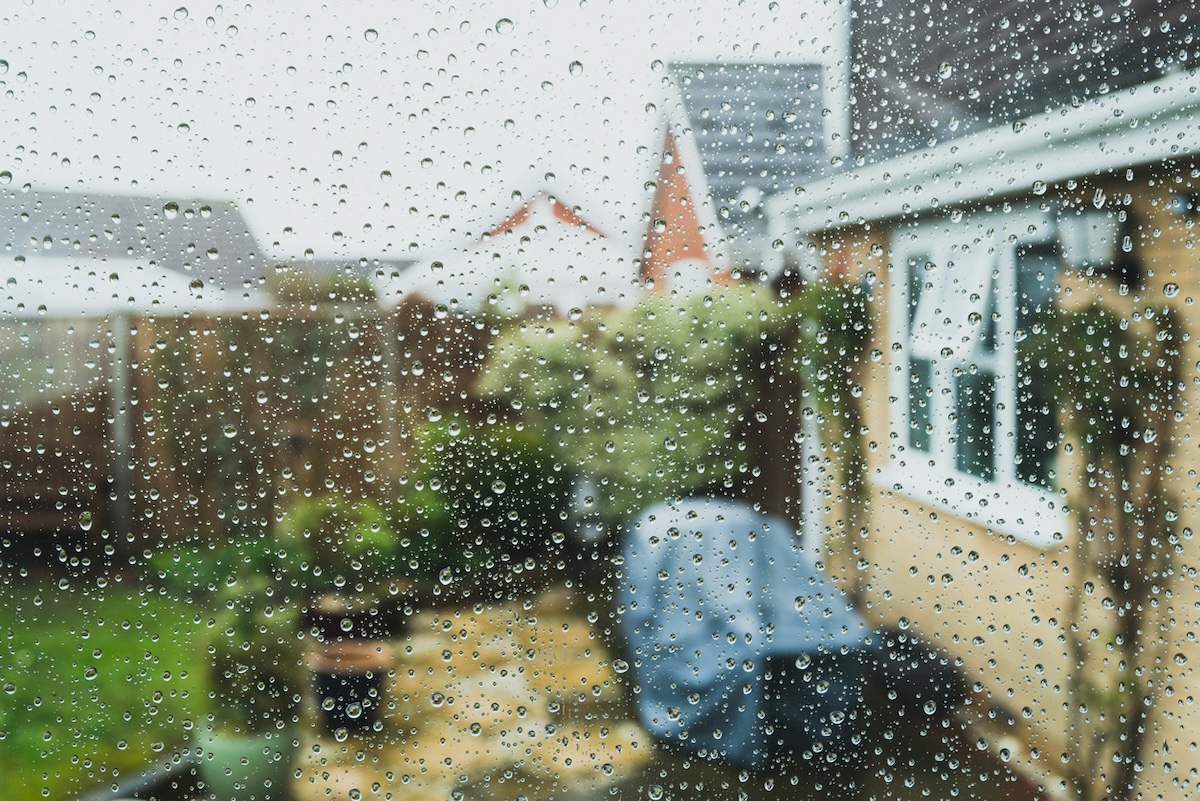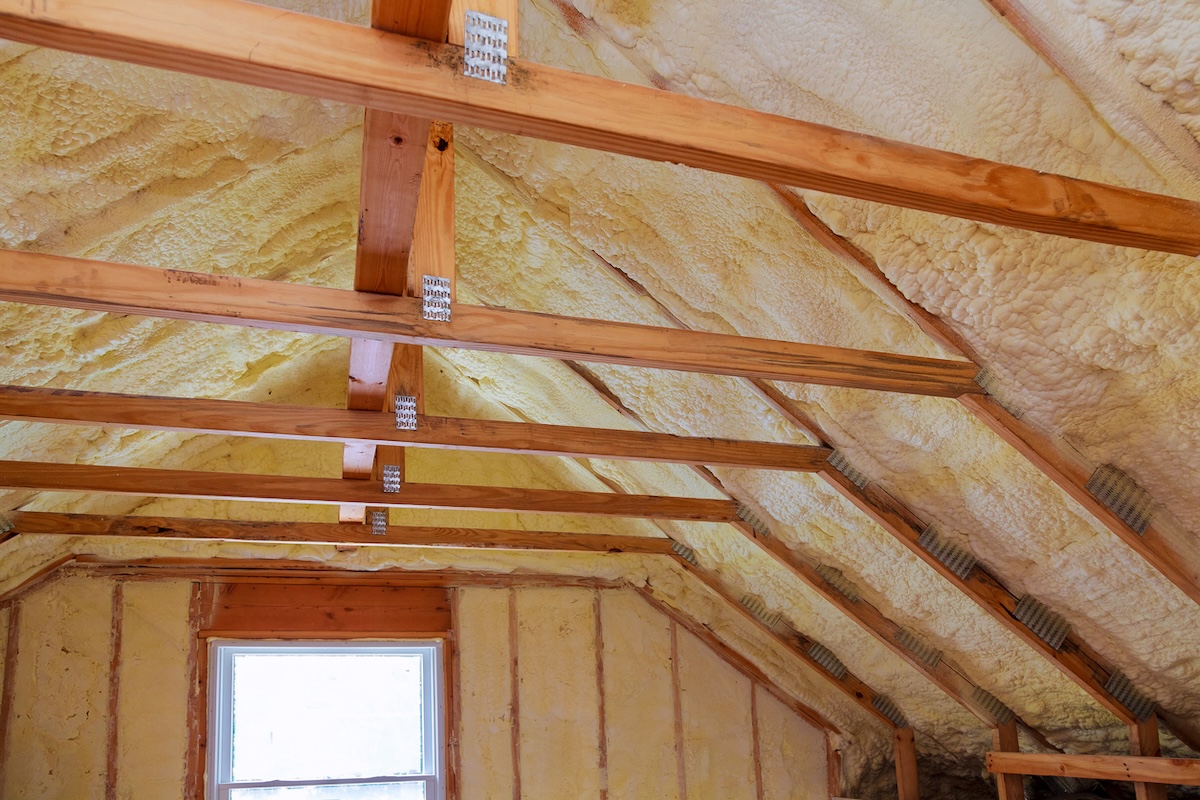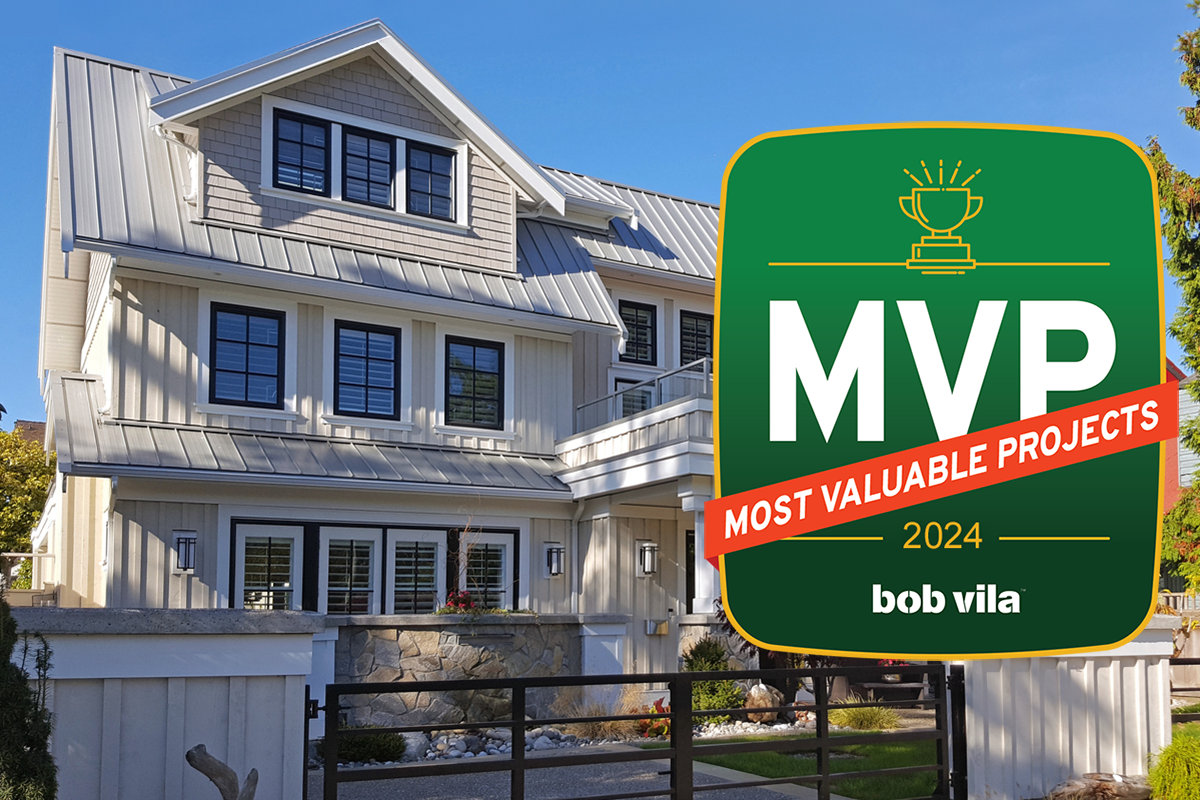We may earn revenue from the products available on this page and participate in affiliate programs. Learn More ›
This is the fourth installment of Bob Vila’s Most Valuable Projects of 2024, a month-long series featuring high-ROI home improvements on water conservation, electrification, home health, and resiliency. Each week, we’re pulling from our vast library of informational content, vetted shopping guides, and connections to industry professionals to present primers on the top projects to take on this year.
Climate change is a very real threat, and one that may be even bigger than you realized. According to Realtor.com, 44.8 percent of homes in the United States are at risk of potentially serious damage from flooding, wind, wildfires, and other climate-related events. Because of these concerns and the potential for damage, many prospective home buyers are taking note. A survey by Zillow found that 83 percent of prospective home buyers cite climate risks as one of the factors used to guide their search for a new home.
Taking measures to make your home more resilient can mitigate potential damage caused by wind, water, extreme temperatures, and natural disasters—and it can make your home more attractive to potential home buyers should you ever decide to sell. Resilient homes often have a higher market value than non-updated dwellings. Plus, many of the projects that will help make your home more resilient against climate change offer additional benefits, such as decreased utility bills or tax breaks.
Moreover, as you invest in resilient updates, you’ll be taking steps to bring your home up to par with newer models that likely have resilient building materials included. About 75 percent of home builders report choosing materials or construction practices designed to mitigate at least one of the five major hazards—wind, flood, fire, earth, and temperature, according to The National Association of Home Builders (NAHB).
Wind Mitigation

Hurricanes, tornadoes, and even strong thunderstorms can produce heavy winds. Wind mitigation refers to adding features that will make a home more resilient against these high winds. More resilient homes are not only less likely to suffer structural damage, but they’ll also be better able to protect you and others during a storm.
One potentially vulnerable area of your existing home is the roof. If you have an older roof that is in need of replacement, be purposeful when choosing the roofing type. Metal roofs, for example, are known for their resilience against wind. If you prefer asphalt shingles, some are specifically designed and rated for their performance during high-wind events. Beyond protecting your home, a new roof could also boost your home’s resale value, helping you recoup much of the costs. The 2024 Remodeling Cost vs. Value Report states that homeowners can recoup an average of $17,461 for an asphalt shingle roof replacement (nearly 57 percent of the initial investment) and $24,034 for a metal roof replacement (about 48 percent of the initial investment).
Replacing your home’s roof with wind-resistant materials or taking other measures, such as adding roof to foundation anchoring or water barriers, may also qualify you for insurance discounts. More than a dozen states require insurance agencies to offer incentives to their customers for making their homes more resilient against wind-related damages.
MORE ON WIND MITIGATION:
➤ How Much Does a Wind Mitigation Inspection Cost?
➤ Hurricane Windows vs. Regular Windows
➤ The Best Hurricane Shutters for Bolstering Your Windows
➤ Metal Roof vs. Shingles: Key Considerations
➤ How Much Does Garage Door Replacement Cost?
Moisture Resistance

Water and moisture can cause serious—and costly—damage to a home. And, unfortunately, there are many different ways that water can cause problems, including seeping in through a leaky roof, penetrating your home’s foundation, or coming in through cracked or loose siding. While you may not be able to predict or prevent all types of water issues, there is a lot you can do to make your home more resilient against moisture.
For example, if you live in an area that is prone to flooding, you can protect your home and minimize damage by using waterproofing compounds along the basement walls and foundation, installing a sump pump, and adding flood vents to the walls, foundation, and other closed-in areas of the home. Choosing water-resistant drywall, paint, and flooring will also make it easier to clean up after a flood while also making it less likely for mold to grow in any areas that get wet.
If you live in an area with high humidity, inside moisture levels may also be high enough for mold to easily grow and thrive. In addition to choosing water-resistant materials, you may also want to consider investing in a whole-house dehumidifier. The Federal Emergency Management Agency (FEMA) recommends tailoring the specific moisture mitigation measures you take to the specific needs of your home through consulting with qualified contractors, engineers, architects, and other professionals.
MORE ON MOISTURE RESISTANCE:
➤ Types of Gutters to Consider for Your Home
➤ The Best Roof Underlayments
➤ 8 Important Things to Know About Window Flashing
➤ This Is Your Home’s Ideal Humidity Level
➤ How Much Does a Whole-House Dehumidifier Cost?
Extreme Temperatures

With climate change, temperatures also appear to be getting more extreme—with some parts of the country facing extreme heat and others dealing with frigid weather. Extreme temperatures can set your air conditioner or heat pump into overdrive as it tries to keep your home comfortable. Not only can this lead to increased utility bills, but it can also shorten the lifespan of the unit itself.
If you’re shopping for a new heating or cooling system, look for the most efficient model for extreme temperatures like units with higher Seasonal Energy Efficiency Ratio (SEER) ratings for hotter climates and models with higher Heating Seasonal Performance Factor (HSPF) ratings for cold climates. If your home currently has gas or oil heating, you may also be able to recoup much of the cost of converting to an electric HVAC unit. The 2024 Cost vs. Value Report finds that, on average, the resale value of a home will increase by $12,422 after an HVAC electrification project. This means that you may be able to recoup about 66 percent of the average $18,800 project cost.
In addition to installing a more efficient heating and cooling system, you can also help protect your home against outside temperatures by improving its insulation. With inadequate insulation, the hot or cold air that your system generates is going to escape, making your HVAC system less efficient and less effective at keeping your home at the desired temperature. Beyond the higher utility bills that this could cause, you could face additional problems, such as frozen pipes in the winter or higher humidity levels in the summer.
Extreme heat can also be accompanied by droughts. When your area is facing a drought, your local government may place restrictions on water use. Consider choosing drought-resistant landscaping, or xeriscaping, which emphasizes choosing plants that are well-adapted to a particular climate and unlikely to need additional watering. In addition to stressing the importance of adding native plants to a home garden, xeriscaping also involves making improvements to the soil in your garden or yard to help conserve water, setting up irrigation systems, and being strategic with where you position plants.
MORE ON EXTREME TEMPERATURES:
➤ Energy Efficiency: What Do All Those Ratings Really Mean?
➤ 10 Types of Insulation All Homeowners Should Know
➤ How Much Does Attic Insulation Cost?
➤ The Best Attic Insulation You Can Buy
➤ Types of Radiant Barriers and How Much They Cost
➤ How to Install a Storm Door Yourself
Natural Disaster Defense

Natural disasters, such as earthquakes, wildfires, and landslides, can pose a serious threat to a home. The damage caused by natural disasters can be expensive to fix and may leave you and the other members of your home in a dangerous situation during the event.
According to the NAHB, making homes more resilient against these disasters is a priority of many builders. For example, about 40 percent of builders in the West, where earthquakes and mudslides are more prevalent, shared that they prioritize features such as strong floor to wall connections or creating continuous load paths when building new homes. Nearly one-fifth of home builders shared that they mitigate wildfire damage by choosing noncombustible exterior wall materials or opting for fire-resistant features when installing a roof on a new home.
For your existing home, you could employ similar measures to make it more resilient against damage. Additionally, if you live in an area at risk for wildfires, you may also want to improve the venting in your home to ensure that ashes and embers cannot enter. Keep the perimeter of the home clear of brush, sticks, or dead plants to lessen the chance of the fire spreading to your home.
If your home’s doors or windows are outdated or not rated for fire-resistance, consider an upgrade. The 2024 Cost vs. Value Report states that you could recoup up to 63 percent of the cost of new windows when you go to resell your house. A new steel entry door can be even more valuable, with up to 188 percent of the cost being added to the resale value of the home. This means that if you spend the average $2,355 on a steel door, you may recoup up to $4,430 back when you sell your home.
MORE ON NATURAL DISASTER DEFENSE:
➤ 9 Ways Natural Disasters Are Changing Building Codes
➤ How Much Does It Cost to Build a Storm Shelter?
➤ The Best Standby Generators for Backup Power
➤ How to Calculate the Right Size Generator for Your Home
➤ How Much Does a Metal Roof Cost?
➤ The Average Cost of Fiber Cement Siding


